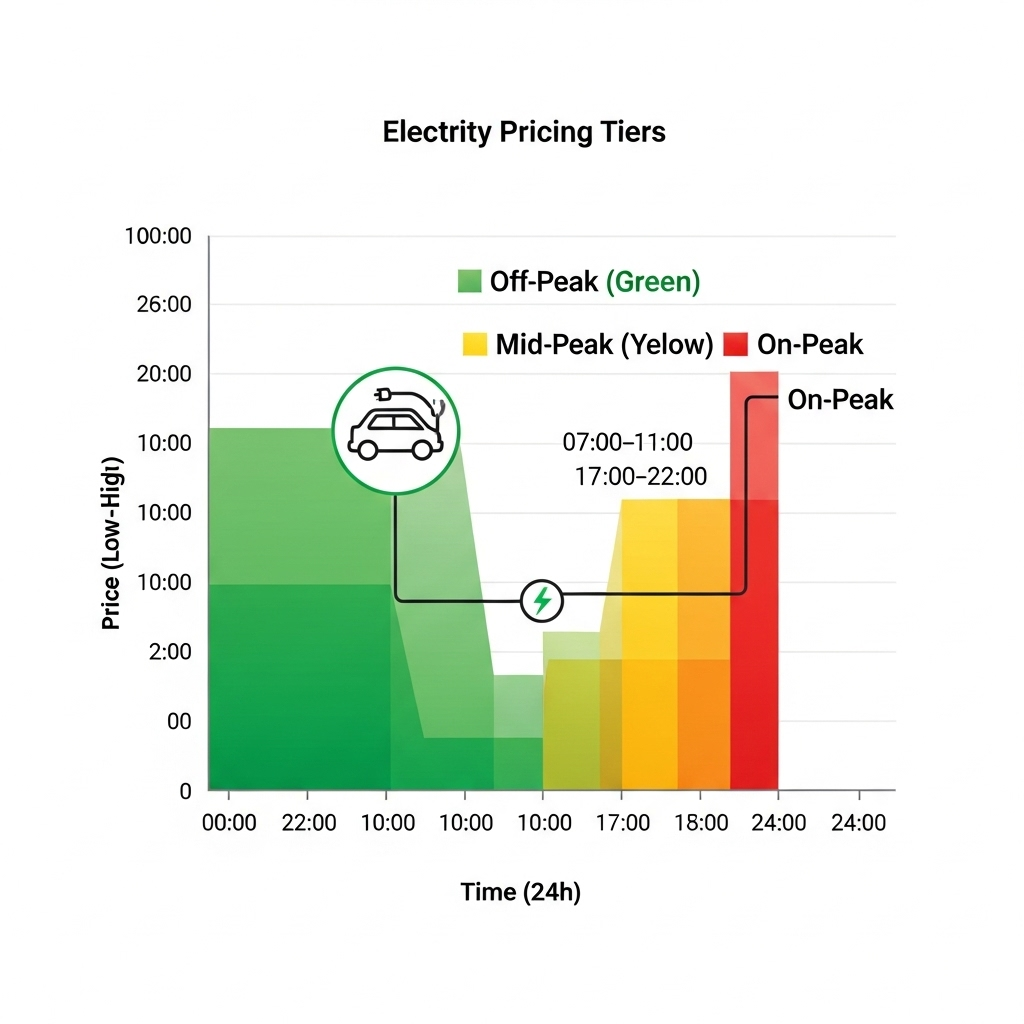The electric grid is undergoing a fundamental transformation. Historically, distribution networks were designed for one-way power flow, from central power plants to consumers. Today, with the rise of distributed energy resources (DERs) like solar panels, battery storage, and electric vehicles (EVs), the grid is becoming a complex, two-way system. This shift demands a new approach to planning. Non-Wires Alternatives (NWAs) offer a flexible, and often more economical, path forward. This article provides a strategic framework for aligning distribution planning with policies that support NWAs, creating a more resilient and cost-effective energy future.
From Passive Delivery to Active Management
The traditional role of the distribution system was to passively serve connected loads. However, as the International Energy Agency (IEA) points out, this old model is insufficient. In a report on grid transformation, the IEA notes that the distribution system's increasingly important role has not been reflected in its operation and planning procedures. Aligning policy and planning is the key to unlocking its modern potential.
The Challenge of Increased DER Penetration
The growing number of solar installations and EVs introduces variability and two-way power flows that legacy systems were not built to handle. Without updated planning, this can lead to grid congestion, voltage instability, and the need for expensive infrastructure upgrades. The challenge is not to limit DERs, but to integrate them intelligently. This requires a planning process that sees DERs not as a problem, but as a potential solution.
Defining Non-Wires Alternatives (NWAs)
An NWA is an electricity grid investment or project that uses non-traditional solutions, such as DERs, to defer or replace the need for specific equipment upgrades. Instead of building a new substation or upgrading power lines, a utility might use a portfolio of NWAs. Examples include:
- Localized Battery Storage: Deploying battery systems to absorb excess solar generation during the day and discharge it during evening peak demand, relieving stress on local transformers.
- Targeted Energy Efficiency: Implementing efficiency programs in a specific neighborhood to permanently reduce load and avoid an infrastructure upgrade.
- Demand Response Programs: Offering incentives to customers for reducing their electricity consumption during critical peak periods.
- Smart EV Charging: Managing EV charging to avoid overwhelming the local grid, often by encouraging charging during off-peak hours.
Crafting Policies That Champion Flexibility
Effective NWA implementation depends on a supportive policy environment. Regulators and policymakers must create a framework that encourages utilities to consider and adopt these innovative solutions. As noted in the IEA's China Power System Transformation report, enabling flexibility investments through innovative regulation is a critical step for system operators.
Establishing a Clear Flexibility Roadmap
A successful transition requires a proactive strategy. Policymakers should work with utilities to develop a flexibility roadmap that anticipates the future energy mix. This roadmap should outline how the grid will accommodate increasing shares of inverter-based resources and DERs. It should be an iterative document, updated regularly to reflect technological advancements and evolving grid needs. This proactive planning helps embed flexibility directly into the system's transformation.
Reforming Utility Incentive Structures
One of the most significant barriers to NWA adoption is the traditional utility business model, which often favors large capital expenditures (CAPEX). Utilities typically earn a return on infrastructure investments, creating a disincentive to pursue NWAs, which are often classified as operational expenditures (OPEX). To fix this, regulators can remove the distinction between CAPEX and OPEX. The UK's regulator, Ofgem, has moved toward a 'Total Expenditure' (TOTEX) framework, which gives utilities a single allowance and encourages them to find the most cost-effective solution, regardless of its classification. This levels the playing field for NWAs.
Mandating NWA Consideration in Planning
Policy can also play a direct role by requiring utilities to formally consider NWAs. For instance, New York's Public Service Commission introduced a policy that requires distribution utilities to evaluate DER solutions as alternatives to traditional network upgrades. Some policies include a 'shared savings' provision, allowing the utility to benefit financially from the savings generated by choosing a lower-cost NWA. This creates a powerful business case for innovation and efficiency.
Building the Technical Backbone for NWA Success
Policy alignment is only half the equation. A robust technical foundation is necessary to identify, deploy, and operate NWAs effectively. This involves advanced monitoring, high-performance assets, and standardized communication protocols.
Advanced Grid Monitoring and Data Analytics
You cannot manage what you cannot measure. To identify where and when an NWA is needed, utilities require granular, real-time data from their distribution grids. This is achieved through the deployment of smart meters, grid sensors, and advanced distribution management systems (ADMS). These tools allow planners to analyze power flows, forecast load with greater accuracy, and pinpoint areas of congestion that are prime candidates for an NWA solution.
The Role of High-Performance Energy Storage
Battery energy storage systems (BESS) are a cornerstone of many NWA strategies due to their versatility. They can provide rapid peak shaving, voltage support, frequency regulation, and congestion relief. The effectiveness of these systems hinges on their technical specifications and performance. When planning an NWA, it is crucial to understand metrics like cycle life, depth of discharge (DoD), and round-trip efficiency. For a comprehensive overview of these factors, you can consult this ultimate reference on solar storage performance, which details the key indicators that define a high-quality system.
Standardizing Interconnection and Communication
For thousands of DERs to act in concert as an NWA, they must speak the same language. Updated grid codes and streamlined interconnection agreements are vital. Modern standards, such as IEEE 1547, enable DERs to not only connect to the grid but also provide active support. These technical rules ensure that DERs can be controlled and dispatched reliably, making them a dependable resource for grid operators. Requiring flexibility capabilities and monitoring equipment in all new interconnection contracts helps build a future-ready grid from the ground up.
A Holistic Approach to Energy System Planning
Effective distribution planning cannot happen in a silo. It requires coordination with other sectors that are increasingly intertwined with the electricity grid. A holistic perspective is essential for optimizing the entire energy ecosystem.
Coordinating with Transportation and Urban Planning
The electrification of transport is one of the most significant trends impacting distribution grids. According to the IEA, policymakers and grid operators need to engage with transport and urban planning departments to recognize shared goals. Integrated planning can ensure that EV charging infrastructure is deployed strategically to minimize grid impact. For example, siting large charging depots for electric bus fleets can be paired with on-site solar and battery storage, creating an NWA that serves transit needs while supporting the local grid.
Cross-Sectoral Resource Management
The power system's reliability is also linked to other sectors, including water management (for hydropower) and land use. As the IEA highlighted in its Integrating Solar and Wind report, a holistic planning perspective should include a broad range of stakeholders, from independent power producers to owners of demand-side resources. This comprehensive approach ensures that competing uses for resources are balanced, leading to an optimal and resilient all-energy system.
Moving Toward a Smarter, More Flexible Grid
Aligning distribution planning with NWA-supportive policy is a critical step in modernizing our energy infrastructure. It requires a multi-faceted approach that combines forward-thinking policy, reformed utility incentives, a strong technical foundation, and cross-sector collaboration. By shifting from a 'build-more-wires' mindset to a 'find-the-best-solution' framework, we can harness the power of distributed resources. This path leads to a cleaner, more resilient, and more affordable grid for everyone.
Disclaimer: This article is for informational purposes only and does not constitute financial or legal advice. Consult with qualified professionals before making any investment decisions.
Frequently Asked Questions
What is the main difference between traditional distribution planning and planning with NWAs?
Traditional planning focuses on building more physical infrastructure like poles, wires, and substations to meet projected peak demand. Planning with NWAs involves first evaluating whether distributed resources, such as battery storage or demand response, can solve the same grid problem more quickly and cost-effectively before committing to a conventional build.
Why is utility incentive reform so important for NWAs?
Many utilities are financially incentivized to make large capital expenditures (CAPEX) because their profits are tied to the size of their physical asset base. NWAs are often operational expenditures (OPEX), which do not offer the same financial return under traditional regulatory models. Shifting to a Total Expenditure (TOTEX) model, which treats both equally, removes this bias and encourages the most efficient solution.
Can residential solar and storage systems be part of an NWA?
Yes. When aggregated and controlled through software, thousands of residential solar and battery systems can function as a Virtual Power Plant (VPP). This VPP can then be dispatched by a utility to provide grid services as an NWA, helping to manage local grid congestion or defer a costly substation upgrade.
What is a 'shared savings' provision for NWAs?
A shared savings provision is a regulatory mechanism that allows a utility to keep a portion of the cost savings generated by choosing a less expensive NWA over a more expensive traditional infrastructure project. This creates a direct financial incentive for the utility to actively seek out and implement innovative, cost-effective NWA solutions.





Leave a comment
All comments are moderated before being published.
This site is protected by hCaptcha and the hCaptcha Privacy Policy and Terms of Service apply.